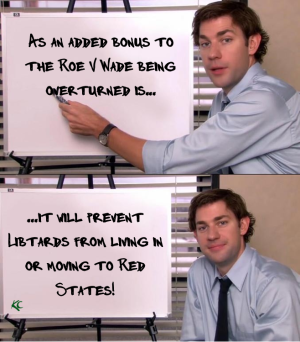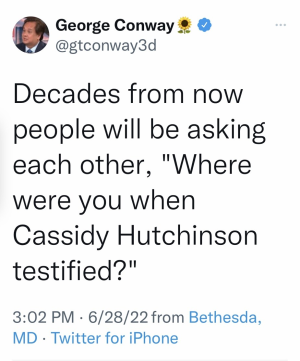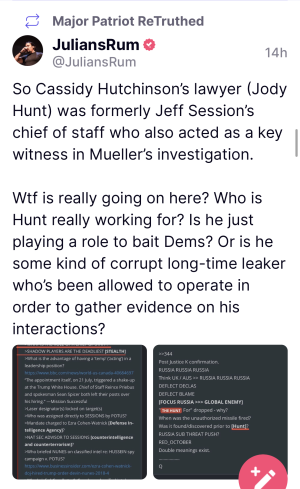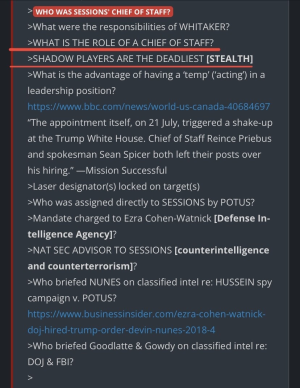The Dallas VA Medical Center ratcheted up their levels to high. Masks, which they never got away from, and now temp checks and monitors at the doors which had gone away for over a year. The hospital is still closed for elective surgery which requires an overnight stay and has been for going on for over a year. All the other hospitals in the DFW area are open for business. Rather than treat their Vets they are paying for Vets to get treatment in private hospitals.I work on a navy base. when I came into work today we were required to wear masks. It’s starting again.
-
Pat Flood (@rebarcock) passed away 9/21/25. Pat played a huge role in encouraging the devolopmemt of this site and donated the very first dollar to get it started. Check the thread at the top of the board for the obituary and please feel free to pay your respects there. I am going to get all the content from that thread over to his family so they can see how many people really cared for Pat outside of what they ever knew. Pat loved to tell stories and always wanted everyone else to tell stories. I think a great way we can honor Pat is to tell a story in his thread (also pinned at the top of the board).
You are using an out of date browser. It may not display this or other websites correctly.
You should upgrade or use an alternative browser.
You should upgrade or use an alternative browser.
Master Thread Dance Your Cares Away/Fraggle/Law Abiding Citizens
- Thread starter Bryan74b
- Start date
Master Threads
What little customer flow they have will shrink to zero.
Look at all the time and money the taxpayers have wasted flying him around to beg when all he has to do is sign a piece of paper and the spigots will open. Not immediately, however.Biden’s energy plan is toast. It got blown up. It shows Biden being outmaneuvered by our allies. The way it was done also shows that Europe knows this presidency needs to be pushed along—a lot. It was the clearest sign of the weakness exhibited by Biden. The gross incompetence is pervasive. Within earshot of reporters, you can see French President Emmanuel Macron telling Biden that the United Arab Emirates is already at capacity with oil production and that Saudi Arabia cannot produce much more either.
Biden was counting on these two nations
to bail him out.
Even if OBiden signed the paper, one of his agencies will shut everything down again or they will wait years to approve leases. If the financial markets react positively, they will shut everything down again.
I have two brothers who work for me, both of them just sent me a message that they failed a covid test.Fucking tell them to fuck right the fuck off!
Bad thing is:
1. Now we’re gonna have to wear a fucking Mask for Gos knows how long
2. It’s my fucking fault. One of them called me yesterday evening before work and said he was feeling sick. I told him join the crowd, we have two people out. He said he would come in because we were short.
I’m just gonna try and keep it to myself and cover their absences so I don’t get stuck wearing a mask until it’s Omonkey pox time
When are they going to start executing these perps?
This ruling could make Greta give up her new found love of cock.The Supreme Court might throw a big wrench in the EPA’s attempt to fight climate change
Update, June 30: The court has issued its verdict, dramatically limiting the Environmental Protection Agency’s ability to limit greenhouse gas emissions from power plants. The Supreme Court issued a pair of seismic rulings last week on abortion and gun control. Now it’s climate change’s turn.www.grid.news
Pineapple
Legendary
DJT puts ketchup on burnt steak. Let’s not start acting like he has taste buds.Pepsi is a girls drink, good to know DJT has a set.
This Kid Makes Me Happy
Does lunch detention prohibit him from eating?
Pineapple
Legendary
Even my liberal friend said as much.I just watched the entire interview of Cassidy Hutchinson so you don’t have to. Well, let’s just say — that is one lying bitch. Holy shit, I thought my ex-wife was a a lying sack of shit, naw, this bitch is elite.
That means the plan is definitely working.Even my liberal friend said as much.
Pineapple
Legendary
It’s very odd that 15-20 years ago my wife and I were telling families that Disney was not family focused. Many thought we were over the top paranoid. Now that our oldest is a mom she will not allow Disney anything for her daughter.
Very proud that we were “over the top paranoid”.
True, but when dealing with Washington bureaucrats.. maybe shrink your team, idk I'm sure every position from interns to military advisers are 90 percent plus compromised.We have to seriously agree that Trump made horrible hires. We have to seriously HOPE he doesn’t do this again in 2024.
Pineapple
Legendary
This Kid Makes Me Happy
I’d take him out for his favorite meal and repeat what I told my kids many times - the school has their rules and we have ours. You will have to pay a price for following what you believe. Even though it is a Christian School it is still run by people. This is how life works.
dirtytoeddawg
Legendary
dirtytoeddawg
Legendary
Allergies are raging now. I've had clogged sinuses for over a week.I have two brothers who work for me, both of them just sent me a message that they failed a covid test.
Bad thing is:
1. Now we’re gonna have to wear a fucking Mask for Gos knows how long
2. It’s my fucking fault. One of them called me yesterday evening before work and said he was feeling sick. I told him join the crowd, we have two people out. He said he would come in because we were short.
I’m just gonna try and keep it to myself and cover their absences so I don’t get stuck wearing a mask until it’s Omonkey pox time
Never take a Wuhan test that gets recorded. There are plenty of home tests available. Treat yourself and don't tell anyone or call it something else.
Long Cat V2.0
Legendary
Just to be clear, she’s sorry for the social media posts. She’s not sorry about her ideas or actions, just that she posted them on social media.
I'm sure the FBI, wink wink, will let them go after they give them the names of who they work for. And then will do nothingWhen are they going to start executing these perps?
Coal is allegedly a polluter whereas Nuclear is not. But the Germans have caved to the EnviroNazis. Shows the EnviroNazis are not wanting clean energy, they want no energy...Morons.
Only thing is this happened in Texas and we still, sometimes, execute people.I'm sure the FBI, wink wink, will let them go after they give them the names of who they work for. And then will do nothing


Democrats Are Domestic Terrorists Too!
The masked Karens of America don't want the Proud Boys to have all the fun so they started several insurrections last weekend


Nation braces for miserable travel weekend as canceled flights stack up
Americans are headed into an ugly Fourth of July travel weekend, with 1,800 flights canceled already this week with days left to go. Airlines are struggling to meet surging demand after pand…
And they laughed and scoffed when Trump told the Germans exactly what was happening, what would happen and what did happen

^^what a moron^^

GM happening now piper sandler chief strategist michael Kantrowitz says earnings estimates are 20% too high going into 2Q earnings. "2nd half of the year for markets will include a lot of volatility. The slowdown is just starting
“Misery loves company”
It’s not a cliché—it’s the Democrat Party platform.
Belezabro
Elite
Ha Ha Ha Hand out Coat Hangers an tell them to calm down....
Big 12 makes an appearance at the end.
Would go a long way toward undoing much of the DS bureaucracy. Doubtful, imho.Man oh man keep your fingers crossed on this case. it would b fantastic if SCOTUS shut down the rule making and legislating ability of all these agencies of Government.
Make Congress Do Their Damn Job.

One more blockbuster Supreme Court decision could still be coming even after Friday's abortion ruling
The Supreme Court's decision to overturn Roe v. Wade was a monumental moment in the history of the high court. But another major decision may still be coming.www.foxnews.com
Ever heard of Schedule F? Trump was going to fire the Deep State.
LINK
LINK
quote:
Following the lockdowns of mid-March 2020, Trump became increasingly frustrated with the CDC and Anthony Fauci in particular. Trump was profoundly aware that he had no power to fire the man, despite his epicly terrible role in prolonging Covid lockdowns long after Trump wanted to open up to save the American economy and society.
Trump’s next step was radical and brilliant: the creation of a new category of federal employment. It was called Schedule F.
Employees of the federal government classified as Schedule F would have been subject to control by the elected president and other representatives. Who are they? They are those who met the following criteria:
Positions of a confidential, policy-determining, policy-making, or policy-advocating character not normally subject to change as a result of a Presidential transition shall be listed in Schedule F. In appointing an individual to a position in Schedule F, each agency shall follow the principle of veteran preference as far as administratively feasible.
Schedule F employees would be fired. “You’re fired” was the slogan that made Trump TV famous. With this order, he would be in a position to do the same to the federal bureaucracy. The order further demanded a thorough review throughout the government.
Each head of an executive agency (as defined in section 105 of title 5, United States Code, but excluding the Government Accountability Office) shall conduct, within 90 days of the date of this order, a preliminary review of agency positions covered by subchapter II of chapter 75 of title 5, United States Code, and shall conduct a complete review of such positions within 210 days of the date of this order.
The Washington Post in an editorial expressed absolute shock and alarm at the implications:
The directive from the White House, issued late Wednesday, sounds technical: creating a new “Schedule F” within the “excepted service” of the federal government for employees in policymaking roles, and directing agencies to determine who qualifies. Its implications, however, are profound and alarming. It gives those in power the authority to fire more or less at will as many as tens of thousands of workers currently in the competitive civil service, from managers to lawyers to economists to, yes, scientists. This week’s order is a major salvo in the president’s onslaught against the cadre of dedicated civil servants whom he calls the “deep state” — and who are really the greatest strength of the U.S. government.
Ninety days after October 21, 2020 would have been January 19, 2021, the day before the new president was to be inaugurated. The Washington Post commented ominously: “Mr. Trump will try to realize his sad vision in his second term, unless voters are wise enough to stop him.”
Biden was declared the winner due mostly to mail-in ballots.
On January 21, 2021, the day after inauguration, Biden reversed the order. It was one of his first actions as president. No wonder, because, as The Hill reported, this executive order would have been “the biggest change to federal workforce protections in a century, converting many federal workers to ‘at will’ employment.
Just got off the phone with my boss.Allergies are raging now. I've had clogged sinuses for over a week.
Never take a Wuhan test that gets recorded. There are plenty of home tests available. Treat yourself and don't tell anyone or call it something else.
They have to provide a test from CVS or clinic, and see if they are vaccinated and had the booster.
I just hope they require federal contractors to get the shot again so I’m gonna be unemployed
I didn’t see one girl, let alone 12 who need to worry about an abortion because they are ugly and fat and won’t be having sexBig 12 makes an appearance at the end.
FreeMiner
Legendary
You a very bad bad Toxic man @BamaRidger Ha Ha Ha
I m dusting off my Internet Degree in Medicine, I found my black bag again, Dr. Feelgood is back in business.
Yah know all the years I heard those tear jerker stories from the left about deaths from coat hangers in back allies. I never seen one story even on CNN.
Years back when I was still working I used to get apprentices to train. One of my warnings in the morning meeting was this catchy little phrase. "Remember Ladies and Gentlemen. Boys and Girls. Never put your Pinky Where You Would Not Put Your Dinky" It helped cut down on hand injuries in the shop.
Was Not Released TodayMan oh man keep your fingers crossed on this case. it would b fantastic if SCOTUS shut down the rule making and legislating ability of all these agencies of Government.
Make Congress Do Their Damn Job.

One more blockbuster Supreme Court decision could still be coming even after Friday's abortion ruling
The Supreme Court's decision to overturn Roe v. Wade was a monumental moment in the history of the high court. But another major decision may still be coming.www.foxnews.com
Tomorrow the Final 2 SCOTUS Decisions Tomorrow Are This One and Trump's Remain in Mexico Policy
FreeMiner
Legendary
@Pineapple Yah torture him like you torture me. Show him Staci's picture then slap his hands.I’d take him out for his favorite meal and repeat what I told my kids many times - the school has their rules and we have ours. You will have to pay a price for following what you believe. Even though it is a Christian School it is still run by people. This is how life works.
I see how you roll....
Last edited:
Similar threads
- Replies
- 13
- Views
- 481
- Replies
- 0
- Views
- 2K
- Replies
- 56
- Views
- 4K
- Replies
- 113
- Views
- 9K




